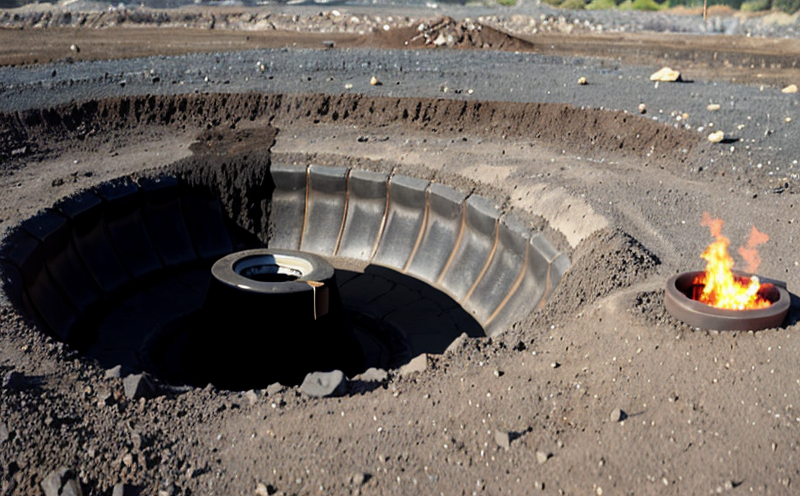EN 15408 Elemental Analysis of Solid Fossil Fuels Testing
The EN 15408 standard is pivotal in ensuring that solid fossil fuels, including coal and other related materials, meet the required elemental composition for efficient combustion and compliance with environmental regulations. This test method involves the determination of key elements such as carbon (C), hydrogen (H), oxygen (O), nitrogen (N), sulfur (S), and ash content.
Elemental analysis is crucial in the mining sector, particularly within coal testing, for several reasons. Understanding the elemental composition helps in optimizing combustion efficiency, reducing emissions, and ensuring product quality. The test method involves several steps that ensure accurate results:
- Sampling: Representative samples are collected from various locations within the mine or processing facility.
- Preparation: Samples are prepared through standard procedures to ensure homogeneity and consistency.
- Analysis: The sample is subjected to elemental analysis using advanced analytical techniques such as Inductively Coupled Plasma Mass Spectrometry (ICP-MS) or X-ray Fluorescence (XRF).
The results of this testing are critical for several stakeholders, including quality managers who ensure product consistency, compliance officers who verify regulatory adherence, and R&D engineers who optimize fuel blends. Additionally, procurement teams rely on these test results to source high-quality raw materials.
| Standard | Description |
|---|---|
| EN 15408:2009 | Determination of the elemental composition (C, H, O, N, S and ash) of solid fossil fuels by combustion analysis. |
Why It Matters
The accurate determination of the elemental composition of coal and other solid fossil fuels is critical for several reasons:
- Combustion Efficiency: Knowing the exact elemental content allows for optimal fuel blending, which enhances combustion efficiency.
- Emissions Control: The analysis helps in reducing harmful emissions by optimizing the fuel-to-air ratio during combustion.
- Quality Assurance: Ensures that products meet specific quality standards and customer expectations.
- Regulatory Compliance: Helps mining companies comply with environmental regulations and industry standards, avoiding potential fines or sanctions.
In essence, EN 15408 testing is not just a compliance requirement but also an essential tool for improving operational efficiency, reducing costs, and protecting the environment.
Applied Standards
| Standard | Description |
|---|---|
| EN 15408:2009 | Determination of the elemental composition (C, H, O, N, S and ash) of solid fossil fuels by combustion analysis. |
The standard specifies detailed procedures for collecting samples, preparing them for analysis, and conducting the combustion analysis to determine the elemental content. Compliance with this standard ensures that results are accurate and reliable, meeting international quality control requirements.
Quality and Reliability Assurance
- Representative Sampling: Ensures that the sample accurately reflects the overall composition of the fuel.
- Standardized Procedures: Follows internationally recognized protocols to ensure consistency and repeatability.
- Advanced Analytical Techniques: Utilizes cutting-edge instruments like ICP-MS or XRF for precise measurements.
- Interlaboratory Comparisons: Participates in regular interlaboratory comparisons to validate the accuracy and reliability of results.
These measures ensure that the test results are not only accurate but also consistent, providing confidence to all stakeholders involved. The laboratory adheres strictly to these protocols, ensuring that every test conducted meets international standards.





